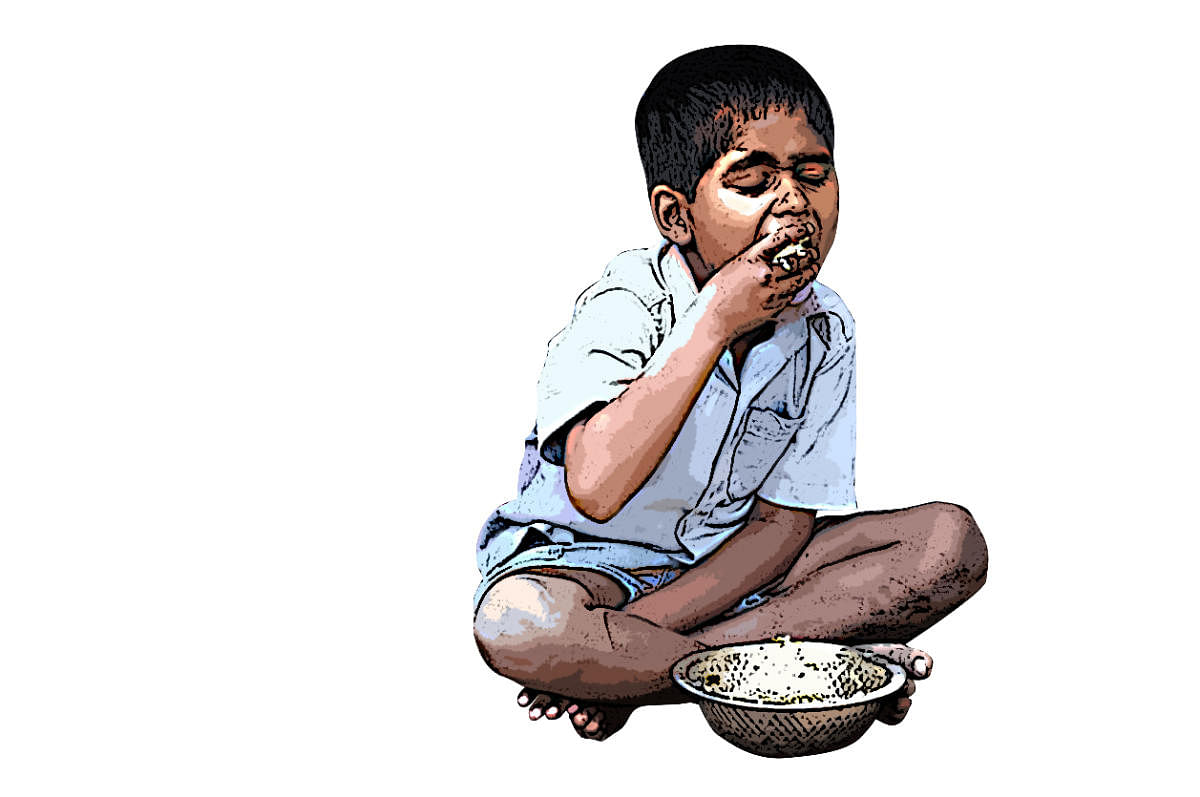
Karnataka is ranked as one of the most dynamic states, with an enviable economic growth rate. Governments staunchly promote economic growth justifying it by claiming that this growth would enable them to spend much more on essential services and the welfare of their citizens. But one will be shell-shocked to note that a mere 2.03% of the state’s GSDP is being spent on essential services -- 1.85% on education, 0.18% on health and a minuscule 0.0031% on social protection as of 2017-18.
These figures can be found in none other than the recently released Vision Document 2030 on Karnataka’s Strategy and Action Plan to achieve the 17 UN Sustainable Development Goals (SDG) by 2030. Goal-wise indicators, targets and monitoring systems have been set, along with the budget requirements for achieving the goals. The state has the ambitious hope of raising the spending on education to 6%, on health to 3% and on social protection to 3.5% of GSDP by 2030, bringing the total spending on essential services to 12.5%. It is estimated that Rs 9.87 lakh crore would be required over the next 10 years to meet the SDGs – Rs 1.99 lakh crore more than current spending.
To achieve SDG 1 – ‘no poverty’ -- the Karnataka government hopes to identify the poor as per the comprehensive Multi-Dimensional Poverty Index (MPI) for which data is available as of 2015-16. Also, for Goal 1, 11.5 million households are to be covered under Ayushman Bharat scheme and maternity benefits. But there are nine social security benefits to be provided under ILO Convention No. 102 and not just these two benefits. In fact, the Social Security Code does not universalise social security at all and has practically nothing for the 93% unorganised workers. While all those with MGNREGA job cards are to be covered, there is no similar provision for an Urban Employment Guarantee. There is also no significant provision for increasing land ownership by the landless, which is a sure way of removing poverty.
What is curious is that all anti-poverty measures appear to be limited to the extension of existing government schemes, with no obligations on the private sector, where most of the 93% informal sector workers are employed. Thus, raising the Minimum Wage would be the surest way of meeting several SDG goals, especially those on reducing poverty, inequality and malnourishment. But sadly, the document states that agricultural labour wages, along with DA, was Rs 3,169 per month as of 2018, which the Action Plan hopes to increase to Rs 4,500 by 2030. This is way below the Rs 18,000 set by the Seventh Pay Commission in 2016 itself as the need-based minimum wage. A 2019 UN Report of the ‘Inter-Agency Task Force on Financing for Development’ says that combating inequality and achieving the SDGs will require addressing of the “falling wage share”. Further, the new Labour Codes dilute all labour laws, making achievement of Goal 8 on ‘decent work’ a mirage.
To meet SDG 2 on ‘ending hunger’, the emphasis is on improving productivity of food grain crops, promotion of sustainable agriculture, etc. But what is lost sight of is that “the more farmers increase production, more the price of their produce falls.” There is no guarantee of an MSP as a legal right for trade with private traders, which is what the protesting farmers are demanding.
The Krishi Bhagya Scheme, under which Farmer-Producer Organisations (FPOs), are incentivised has an increase in allocation from Rs 250 crore to Rs 610 crore by 2030 -- just a little above the Rs 500 crore allocated to the Anubhava Mantapa. But what will be the fate of the SDG Action Plan with the Union government bent upon not repealing the three farm laws, which will corporatise agriculture and worsen the farmers’ situation?
Given the shocking malnourishment levels, there is no commitment to universalise the PDS. Though Annabhagya for BPL beneficiaries sees an increase in subsidy from Rs 3,700 crore to Rs.9,596.85 by 2030, it is not clear whether this includes enhanced entitlements to pulses and cooking oil or about finding ways to include eggs, vegetables and fruits in the PDS. Also, the continued use of the 2011 Census figures to determine coverage under the National Food Security Act (NFSA) has meant the exclusion of millions of people from the PDS.
To curb malnourishment, the ‘Way Forward’ has nothing to say about increasing coverage of ICDS centres, which currently do not cover even 40% of children in urban areas. The dire need to convert ICDS centres into day-care centres (creches) for children below three years, which is the period when most of them are becoming malnourished, has not been recognised.
The Action Plan for Goal 11 on ‘sustainable cities and communities’ speaks of rebuilding slums, prioritising public transport, freeing cities from pollution, etc. But all political parties continue to support schemes such as that for an elevated corridor at Rs 37,000 crore that incentivises private transport and increases air pollution. But the government is reluctant to release even Rs 2,000 crore meant for the Kalyana Karnataka Development Board to achieve the stated goal of “distributing resources equitably between urban and rural regions”. Each project, before being sanctioned, will have to be monitored for coherence between these decisions of the political executive and the SDG Action Plans.
The Action Plan for Goal 16 on “peace, justice and strong institutions” talks of strengthening the role of constitutional and rights-based institutions, etc., in promoting human rights, minorities’ rights, etc. Given the subversion of all such institutions and promotion of divisiveness within society by the powers-that-be, what hope is there for safety, security, Right to Life, Liberty and Free Speech?
The most crucial question is whether there will be political ‘buy-in’ for the SDG Action Plan.
(The writer is Executive Trustee of CIVIC Bangalore)